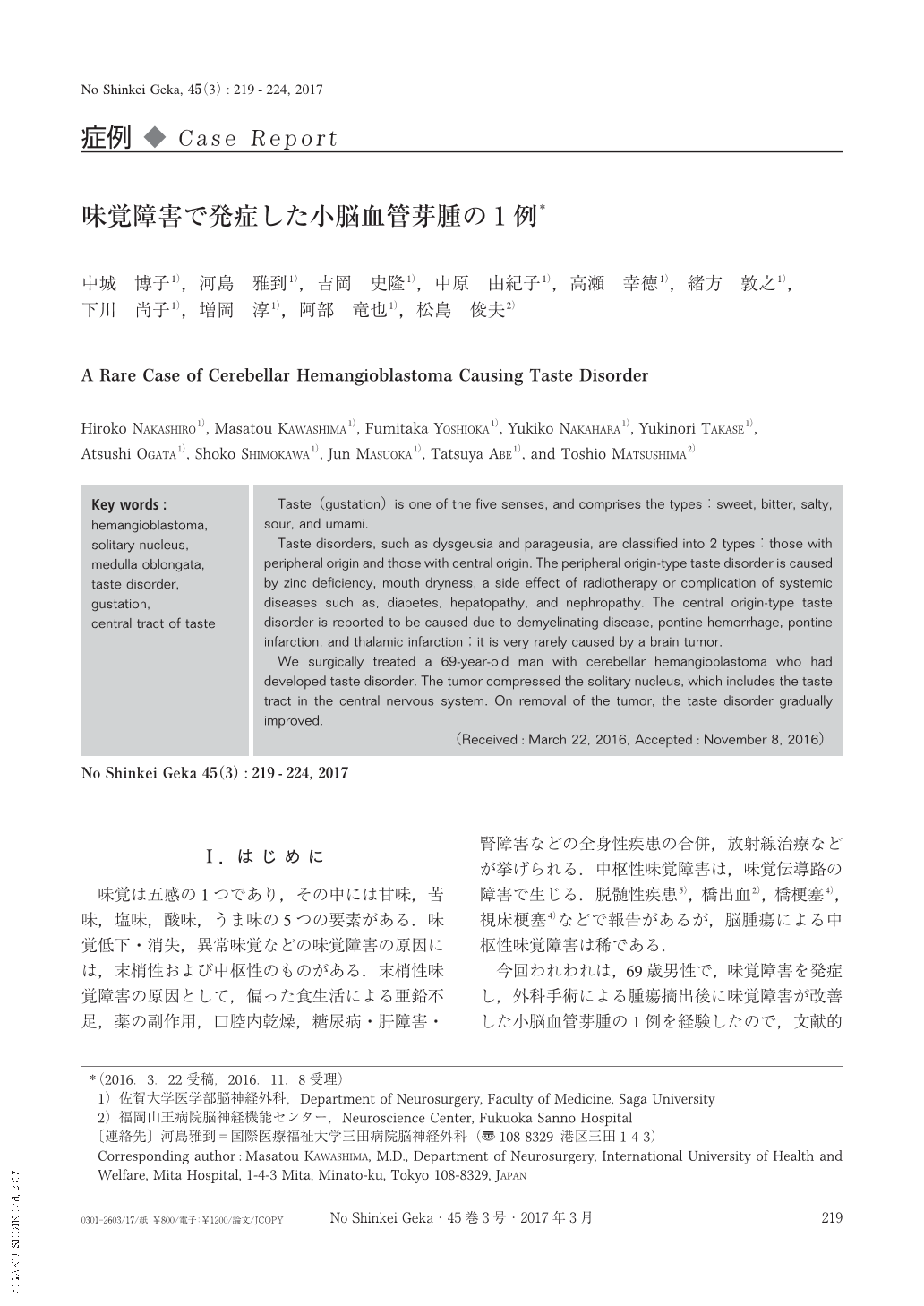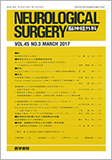Japanese
English
- 有料閲覧
- Abstract 文献概要
- 1ページ目 Look Inside
- 参考文献 Reference
Ⅰ.はじめに
味覚は五感の1つであり,その中には甘味,苦味,塩味,酸味,うま味の5つの要素がある.味覚低下・消失,異常味覚などの味覚障害の原因には,末梢性および中枢性のものがある.末梢性味覚障害の原因として,偏った食生活による亜鉛不足,薬の副作用,口腔内乾燥,糖尿病・肝障害・腎障害などの全身性疾患の合併,放射線治療などが挙げられる.中枢性味覚障害は,味覚伝導路の障害で生じる.脱髄性疾患5),橋出血2),橋梗塞4),視床梗塞4)などで報告があるが,脳腫瘍による中枢性味覚障害は稀である.
今回われわれは,69歳男性で,味覚障害を発症し,外科手術による腫瘍摘出後に味覚障害が改善した小脳血管芽腫の1例を経験したので,文献的考察を踏まえて報告する.
Taste(gustation)is one of the five senses, and comprises the types:sweet, bitter, salty, sour, and umami.
Taste disorders, such as dysgeusia and parageusia, are classified into 2 types:those with peripheral origin and those with central origin. The peripheral origin-type taste disorder is caused by zinc deficiency, mouth dryness, a side effect of radiotherapy or complication of systemic diseases such as, diabetes, hepatopathy, and nephropathy. The central origin-type taste disorder is reported to be caused due to demyelinating disease, pontine hemorrhage, pontine infarction, and thalamic infarction;it is very rarely caused by a brain tumor.
We surgically treated a 69-year-old man with cerebellar hemangioblastoma who had developed taste disorder. The tumor compressed the solitary nucleus, which includes the taste tract in the central nervous system. On removal of the tumor, the taste disorder gradually improved.

Copyright © 2017, Igaku-Shoin Ltd. All rights reserved.


